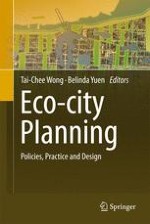2011 | OriginalPaper | Buchkapitel
11. Presentation of Ecological Footprint Information: A Re-examination
verfasst von : Hoong-Chor Chin, Reuben Mingguang Li
Erschienen in: Eco-city Planning
Verlag: Springer Netherlands
Aktivieren Sie unsere intelligente Suche, um passende Fachinhalte oder Patente zu finden.
Wählen Sie Textabschnitte aus um mit Künstlicher Intelligenz passenden Patente zu finden. powered by
Markieren Sie Textabschnitte, um KI-gestützt weitere passende Inhalte zu finden. powered by
